Potting Shed Guide & FAQ's
The potting shed above is from the Swallow Jay range here (new tab).
Everything you ever wanted to know about a potting shed all in one place!
Let's get started:
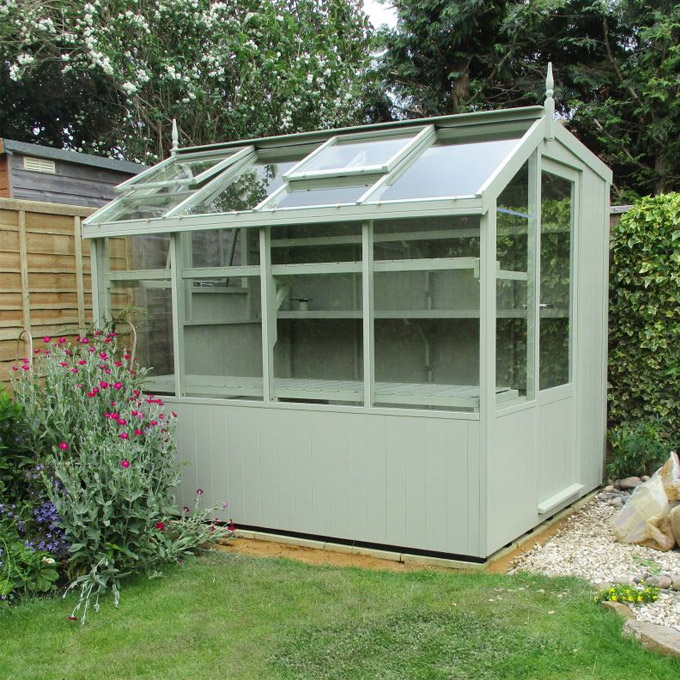 What is a potting shed?
What is a potting shed?
A potting shed is a garden structure to provide a warm and dry place to sow seeds, pot seedlings, and deadhead or prune potted plants, on easy to reach potting benches. They often have 3 wooden walls, with one glazed wall facing south for extra sunlight.
As any experienced gardener knows – and new gardeners will soon learn – every green thumb needs a place to keep the various tools, seeds, bags of compost, and other resources needed to keep a garden in good condition from season to season.
There is even a tradition of potting sheds being the place where gardeners could meet up, out of the hot sun or pouring rain, and share a cuppa, along with wisdom and stories gained during the hours of tending the various plants and grounds. It was also a handy place to work when weather was not cooperating with outside duties.
Planting seedlings, cleaning and sharpening equipment, and other tasks could be accomplished in the potting shed. Potting sheds are essential for large estates and plots, but even for the humbler establishment, they can be very useful.
Make it unique
The domestic potting shed, in modern times, is often far more than a gardening focus. It can be a place to get away from the worries of life and take a break. This doesn’t even need to be a dedicated building. You can set up a potting-shed area in a corner of your greenhouse or garage, in a mud room next to the garden, or even in a lean-to-style shelter next to a wall.
All you’ll need is space to store your tools, and space to sort out pots and other objects needed for various stages of the gardening year. It helps, of course, to have a space to grow seedlings, clean tools, repot plants, store seeds and pots, and other jobs that tend to take up a bit more space, especially at certain points of the season. Remember, too, that if you plan to grow seedlings in your area, or to have a plant or two for gardeners’ ambiance, you’ll need a window to let in the energy needed for your plants to grow and thrive.
Finally, if you have room for a chair or bench, you’ll love using the space for a bit of downtime. Whether puttering around at some job, or just sitting and reading, it will be a peaceful place to relax and depressurise.
** If you're looking for something smaller, consider checking our small greenhouse range here.
Combination of Greenhouse and Shed
If you want to buy a dedicated potting shed, but your space doesn’t have the room for a full-sized one, you can go for a smaller – but still very functional – option known as a grow-shed. This is a great use of space because it is really part-greenhouse, part-shed, and so you will have some space to work, and lots of space to grow.
The Clearview Oxfordshire range is a lovely compact style (view in a new tab here).
One of the best features of this option is that you will be able to grow a greater number of plants, all year long, and then move them outside when you need the room in the shed to do jobs that take up more space. This feeds the desire to grow, even when winter is blowing and freezing outside.
How to Choose The Right Size of Potting Shed?
When you are buying something like a potting shed, greenhouse, or other workspace, it is always a good rule of thumb to go as big as you can afford, and as your space allows. You can always have a little part of the potting shed that is unused, but if you need more room and you don’t have it, there’s little you can do to avoid the frustration ad stress of feeling crowded.
Don’t despair if your area is small though; there are tricks to maximise the space you need.
Keep a potting bench indoors during the winter months, to give you a place to sit and work on little jobs like planning the planting, organising seeds and tools, making sure you have the string, stakes and other items you’ll want when planting begins in earnest. You can even use it when you begin to plant your seedlings. Once the seedlings take up too much space on your work top, the bench can double as a seedling base. When the weather is warm enough, move both the bench the seedlings outside, creating an outdoor workspace for working in warm weather. If it gets too hot, a lawn chair or stool allows you to work in the shed again until it’s time for winter and the bench comes back inside.
**interested in a wooden greenhouse? click here
Pros
1. The Combination is Really Useful!
You get the growing space of a greenhouse with the workspace of a shed, and you can use it for either purpose – or both of them – all year long. You can also store your compost, tools, books, seedlings and other items inside.
2. Get Seeding
A potting shed gives you one concentrated space to keep all of your seedlings. We only have so many windowsills and, in many homes, it just isn’t safe or practical to keep trays balanced on a narrow strip alongside hallways, busy dining tables, or curtained bedrooms. A potting shed allows you to keep them in large clusters – which also makes watering and observation a lot easier!
3. Organising with Shelves and Hooks
A potting shed not only allows you to keep seedlings all in one place, it also allows you to keep tools and other gardening items together. You won’t need to have them spread all over the house (along with whatever soil they bring in on them), and you won’t find yourself searching high and low for something when the time comes to use it. Everything will have a place of its own – and you can even decorate the area with garden-themed signs or knick-knacks to get you in the mood for growing.
4. Winter Warmth (less glass)
You might see having only one glass wall as a disadvantage over a greenhouse, and when it comes to sheer summer growing power that might be correct, but there is an advantage to those three solid walls as well.
For one thing, the potting shed will be warmer in winter. The solid walls will help retain the warmth and energy taken in by a south-facing glass wall. It will make for a more comfortable place to work, and also a warmer place to overwinter some plants that might be susceptible to damage when temperatures drop.
Conversely, the walls allow for a more shaded option in the summer. If you have some plants that can’t handle the full face of the sun all day, you can choose a corner of the shed for them that restricts direct sunlight to morning-only, or afternoon-only, giving them a nice, indirect exposure for the rest of the day.
Same goes for you when you need a break from the sun on hot summer days. Sit alongside the west wall of the shed, and you’ll have a corner out of the sun.
5. Relaxing space
You can sit back in your potting shed and sip that cup of tea, read that latest gardening book or magazine, or simply soak in the quiet – all with a lot more privacy that a full-windowed greenhouse supplies.
The Swallow 8ft wide Rook range comes in a range of different sizes (click to view in a new tab).
A Potting Shed Brings Balance
Here are some of the many reasons why a potting shed fits perfectly into day to day life:
- Quiet Place of Reflection – Everyone should have a place where they can get away from even loved ones, from the pressures and expectations of daily life, and from anything in particular that draws energy or creates worry. A potting shed is a great place to create a refuge like this. It allows one a place to think, to sort out feelings and formulate plans and ways of dealing with anything life has to throw at us.
- Extra Storage – There are a lot of things that are necessary for a good garden, but few of them are used all year long. Compost is needed at certain times of the year, but leftover half-bags of it need to live somewhere when not needed. Tools, often very dirty ones, need to have a place where they can be set aside between uses and cleanings. Seeds, pots, twine, stakes, gloves, hats and other common gardening items can all live in the shed… keeping your house free of their clutter, and making your potting shed a hub of gardening goodness.
- They smell nice! – It may sound strange to some, but a potting shed that has the slight aroma of petrol, the heady scent of earth, and the olfactory aura of growing plants is a beautiful experience to the human nose. Don’t underestimate the power of such smells to add value to your day – and they can all be found, in correct mixture, in a good potting shed.
- More Secure – With the easy fitting of a lock, a potting shed can become a secure place to keep lawnmowers, tillers, various gardening tools – and even bicycles – out of the public eye and safely locked away.
- Personal Gardening Library – Even if you don’t have them now, as you garden more and more you will begin to collect books. You’ll buy one yourself, get one from a friend, find one under the tree at Christmas, or even receive one at a gardening centre promotion – and the potting shed is the perfect place to set up a little library. They are a great source of knowledge, and even help to create that potting shed ambiance that gets you in the mood to do those jobs you’d otherwise put off for a later week… and then a later one after that.
- A Dry Space to Rest – Whether it’s from the rain, sun or wind, you will be thankful for the little haven of comfort provided by your potting shed. You might even find yourself sitting out there, hot cup of tea in hand, watching and listening to the rain pelt down on the pains and roof, and smiling through the wafts of steam.
- Longevity – Potting sheds of decent quality will last for years, for decades and beyond. This is a place that you can house memories with children and grandchildren, and when they take it over those memories will be alive for them even as they make more with their own children and grandchildren. There are few legacies as easy and as wholesome as a family potting shed.
- Work Like a Shed – There are potting sheds that are rustic, bare-bones shelters for gardening only, and there are potting sheds that are equipped with electricity, plumbing, and sometimes even toilets! These places are ideal for gardening work, but they can also function very well for other kinds of work. Need a quiet space to put together that report or proposal? A well-lit space to paint or sculpt? Even a secluded spot to do homework or read? The potting shed can be set up for any or all of these.
- Observe Wildlife – Wildlife comes in all shapes and sizes, and though you might not want a fox or badger living in your potting shed, it will undoubtedly become home to spiders, moths, and other creatures that will, if accepted and observed, help you to better understand the habitat in which your garden sits. It’s all a natural web of life, after all, and each part of it serves its function.
- Actual Potting! – Finally, we need to greet the elephant in the room: your potting shed will be a perfect spot to complete your potting! A bench, a work top, some empty pots or seed trays, some jars or packets of seeds, and a chunky bag of compost and you’ll have everything you need for a satisfying, productive time prepping for the spring planting.
The Clearview Cambridgeshire range lets loads of light in for a lovely potting shed! (click to view the range in a new tab here).
What should you use your potting shed for?
1. Potting Table (essential)
From old tables, recycled kitchen counter-tops, bespoke-constructed cabinets, or even plywood screwed onto sawhorses, the choices of work top are as varied as the needs and means of those who need one.
All you need to do is make sure that it is solid and won’t tip over and that it has enough room to do the work – and possibly store the seedlings – that you need for your size of garden.
You might want to stand to do your potting (many do) or sit. If you are a stander, make sure your table is high enough that you aren’t hunched over all the time. If a sitter, make sure it’s low enough to be a comfortable working height. Choosing a higher table top with a tall bench beside it can give you both options to choose from, depending on your mood.
**Want to shop lean to greenhouses? click here
2. Soil/Compost
You can buy potting soil at any garden centre or major grocery store, or even have it delivered to your home in whatever quantities you like. Many also make their own potting soil using a composting system.
Once you have it, it is handy to keep it in a wide-mouthed rubbish bin or similar container, so you can easily scoop it out and into pots or spread it over seed trays. A food waste bin is a good size for smaller gardens, and allows you to easily reach the bottom of the bin without having to bend into the top of it and reach way down. These bins are large enough to be filled easily from a compost bag, don’t need to be refilled too often as to make it inconvenient, and are easy to carry, store, and use on a table top.
Other alternatives are (well washed-out) detergent containers, cardboard boxes lied with bin-liners, or even the original compost bag, with the sides rolled down as you go to expose more compost for use.
3. Storage
If you have a lot of money to spend on pots, a lot of muscle to heave them around on a regular basis, and enough care to prevent chipping and smashing them in the course of repeated repotting and other duties, then you may want to invest in the mystique and beauty of the terracotta plant pots all lined up neatly in the shed.
For most of us though, the reality is that plastic pots are far more practical. They are cheaper, lighter, hold up well, and store in stacks that are much smaller and more mobile than the chunkier, heavy terracotta versions. The bulk of most gardeners’ pots are made up of plastic ones, saving the fancier terracotta ones for display pieces and larger, more established plants that don’t need to be moved around much.
4. Hand Tools
There are a lot of tools that gardeners collect over the years. Some are needed right away, and others build up over time. Sequiturs, sheers, spades, shovels, scissors, knives, saws, stakes, strings, mesh, plastic, strimmers, mowers, tillers, edgers, brushes, paint trays, scrubbers, watering cans, hoses and a great many other items can build up over time and your shed is the perfect place to keep them. This may sound like a lot, but the truth is most gardeners have most of these, and several of them in multiple versions!
A few spoons of mineral oil in a bucket of sand and you can stick your hand tools in it, blades down, to keep them clean, protected, and stored in a way that’s interesting and pleasing to the eye. Others prefer the look of hooks and pegs on the wall.
5. Tall Tools
For taller tools, like rakes, shovels, hoes and the like, hanging them might be better. Make sure you can clearly see the heads of them so you can quickly find and retrieve the tool you want in a given moment. Heads can be securely held in place at the top by a wooden rack, or at the bottom, allowing you to use a hole in the handle or a looped thong to hang your tool. Hanging them higher can allow room underneath for other things too, like pots, boots, or buckets of hand tools.
Most find that a variety of these methods works best. Very long tools, or those with heavy heads (like post-hole diggers and strimmers) are best kept with the heads down, sometimes simply resting on the floor and leaned into a corner. Hoes and rakes work well with the heads up, as they can be set between two pegs very easily and are easy to find that way. Shovels vary so much in size that the method used will depend on the length, weight, and balance of each one.
It may take some extra time, but it is well worth carefully planning how your tool storage will come together. Lay them out on the ground and move them into different combinations until you find a configuration that you are happy with.
Make sure to consider the placement of doors, sunlight, which tools might have some soil or moisture left on them when put away and which ones won’t hold up well unless they are kept very clean. Save room for lead cables and other things that you will remember later. Tools that are used often should be most accessible, but those that come out only once or twice a year can live in deeper corners as you won’t need to get at them very often.
6. Plant Food and Fertiliser
Fertilisers and similar substances should be kept in a dry place, and out of the direct sunlight. If you buy these, the bags or buckets will be clearly labelled, but if you make your own, it is a good idea to clearly mark them for quick finding, and so you don’t forget you have something.
Black marker over masking tape works well around buckets and some bags, of you can buy white stickers and write on those. Make sure you place them so that they can be read without having to move the item.
If your shed is unheated, you won’t want to store horticultural or neem oil in your potting shed, as these might freeze in winter, or go through too much temperature change over the course of the year. They keep best at temperatures close to human body temperature, so storing them in a cupboard or closet in the house is ideal.
**interested in large greenhouses? click here
7. Watering Equipment
Hoses are long-wearing in most cases, but they will do even better – and last a few years longer – if you store them indoors, and a potting shed is the perfect place. This goes for all irrigation equipment really. Store them in coils on the wall or on a shelf. Or hang them in sacks when the season doesn’t warrant their use. This will keep the sun off of them and reduce UV damage, and may even keep them just above freezing when it drops below zero outside in the wind and wet.
8. Seeds
A good potting shed can provide a safe haven for seeds too, and can be a place where they stay organised, and easy to find.
To keep them safe from little foragers, like mice and rats, try storing them in secure containers. Mint tins, biscuit tins, or even glass jars (keep these out of direct sunlight) work really well.
As with every time you repurpose a container, make sure you label it clearly, and so the label can be seen when the item is in its place on the shelf. With seeds, it’s a good idea to include a date on the tin, or on the individual bags of seeds within it, so you can tell how long each has been stored, the order in which you want to sow them, and if it’s worth sowing them at all.
As with horticultural oils though, seeds can feel ill effects from freezing or wide temperature swings, so if you shed isn’t going to prevent these conditions, you might want to designate a cupboard or shelf in the house to keep all of your sensitive gardening items safe and yet still easy to find.
9. Extra Bits
There will always be gadgets, tools, knick-knacks and other items that don’t easily fit a category, or don’t seem to have a nook of their own to call home. Loose twine, odd stakes, labels, tarps and covers and other such items still need a place to live, and still need to be found without a lot of frustrating searching.
A great place to keep this kind of thing is in a catch-all bucket.
Set aside a biggish plastic pail or similar container and put it in a place where it is easily accessed, and it’s easy to get your hands in there and rummage around for what you need. Anything that doesn’t have a place of its own, should be in there.
Of course, it’s best to keep things in dedicated spots, where you will instinctively come to know they live, and can pop in and grab them without any delay, or even let someone else know where they are if you are accepting a little help in the garden while ill or away from home. Much easier to say ‘It’s in the tin on the right side of the shelf, and its labelled,’ than asking someone to search through a pile of disorganised items.
If your bucket starts to get full, take everything out of it – you may find you have enough of a certain thing to warrant a ‘twine box,’ or something similar… that item will now have a place of its own, and you’ll have new space in the bucket.
If you can, always leave a little space around items to allow for expansion or insertion of similar items without having to redo the organisation of the whole shed each time there is an addition.
10. Larger Equipment
Many potting sheds are just for gardening, and lawn care items are kept in a garage or garden shed in another part of the property. Some, however, join the potting shed uses with general lawn care or even other workshop functions – all in one place.
If you are considering this, then we recommend you size up considerably from what would be a standard potting shed. Think of the building as having zones. A potting zone, lawn care zone – which may include parking for push or ride-on lawn mowers – or even wood-working zone. Include an area for general storage too, and wheelbarrows, compost, bicycles, firewood, barbeques and other larger items can go there too.
Don’t forget to think about access when planning your zones – make sure your lawnmower can be easily moved in and out, for example.
11. Growing Area
If you have the room for it, and your shed is equipped with electricity, you can set up a seed germination area inside it, with grow lights and a fairly constant environment. This will allow you to propagate plants, start seedlings, and feed your gardening bug all year long.
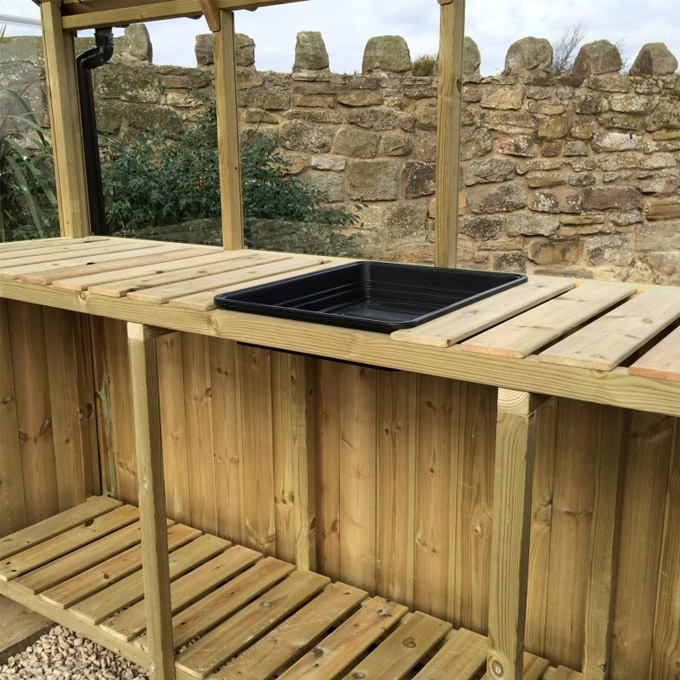
12. Overwintering Plants
Some plants do very well outside in the summer but can be killed off by some of the more extreme winter days (or nights). A place to over-winter these plants is a great addition to the other functions of a potting shed but can take up substantial space.
If you have it though, a climate-controlled, well-lit potting shed will allow you to keep cherished plants alive all year long, even if they aren’t quite hardy enough to cope with a strong winter. Attaching a greenhouse to a potting shed is a great way to get the best of both worlds, and to double your space for many gardening activities, year-round.
13. Garden Décor Winter Protection
Storing decorative items is another excellent use of a potting shed. Whirly-gigs, cloches, metallic art and painted signs can look great in a summer garden, but a harsh winter can leave them looking faded and disused if left outdoors. The same goes for garden furniture and outdoor cushions.
A great additional benefit of bringing in decorative items for the winter is the joy you will have on rediscovering them in the spring. Bringing out beloved items to decorate your burgeoning garden can mark the beginning of the growing season, and bring joy to your heart as you wait for those first green stalks to pierce the soil and reach up for the sun.
14. Drying Area for Plants
Any kind of plant preservation, whether you’re drying flowers and herbs, pressing them in books, or putting together lovely bouquets, benefits from having a stable, dry area to work and to store finished or ongoing projects. Ceiling racks work well for this, as does utilising the bottoms of shelves to hang items from strings and tacks.
An added benefit of this practical storage is that it will add beauty and interest to your indoor gardening or garden-themed space.
Need a new potting shed?
Here at South West Greenhouses, we’ve been supplying customers like you for years with quality potting sheds that fit your specification and budget.
You can browse all of our potting sheds here.
You can also read our latest reviews here.
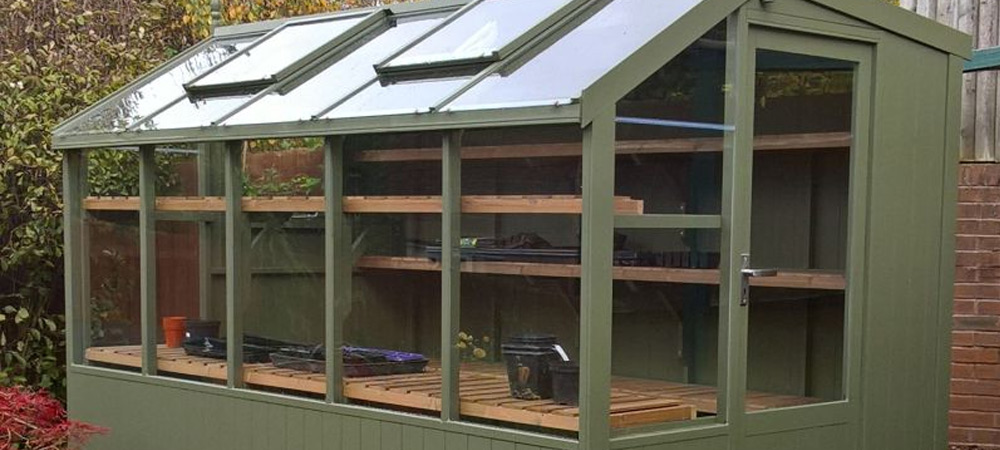
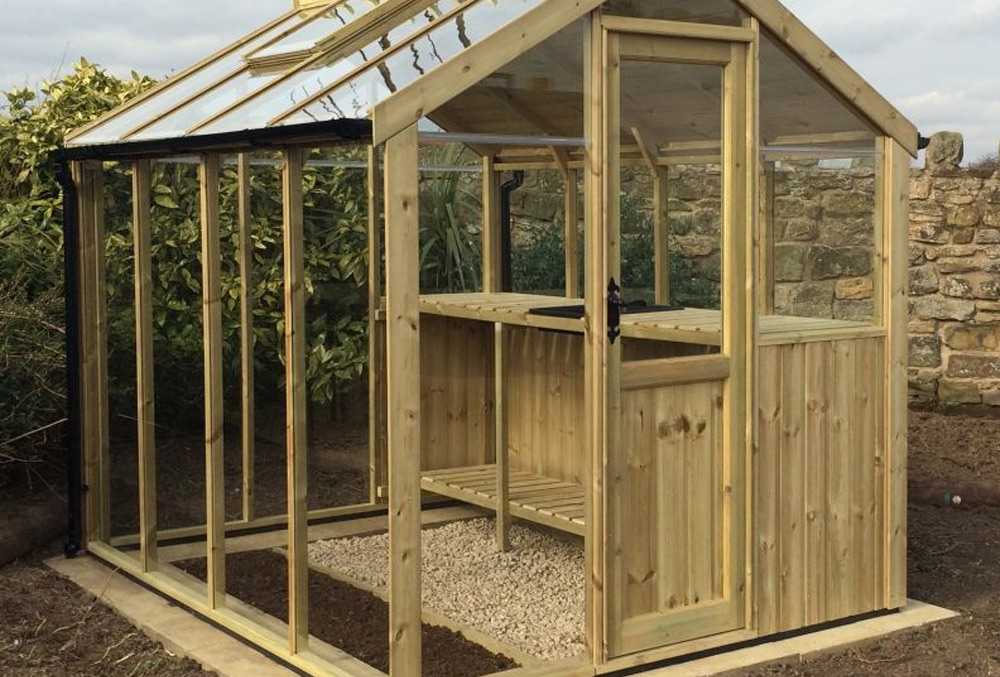
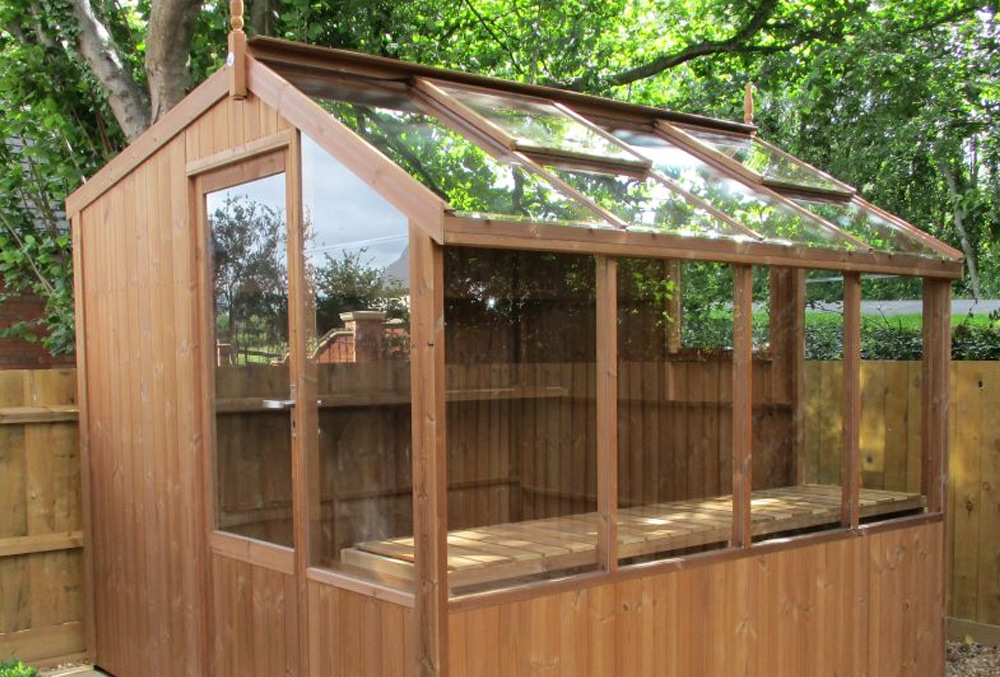
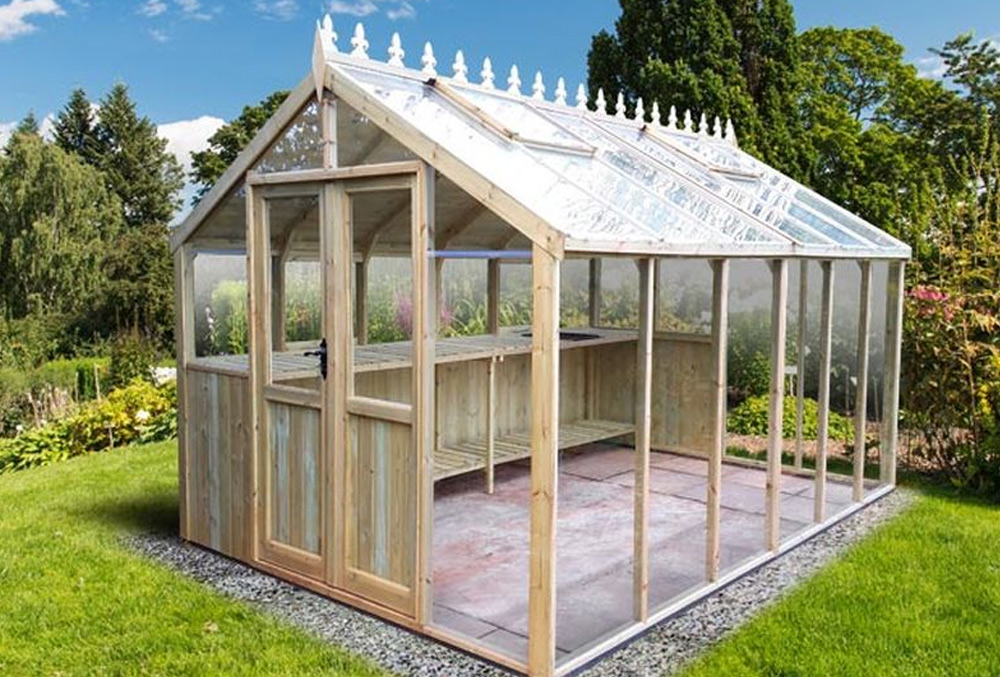
 Author:
Author: